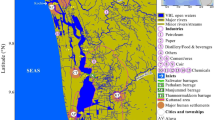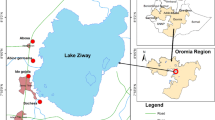Abstract
The latent potential for problematic weed growth in a hydro-lake is proportional to water level fluctuation, water clarity, lake shape, littoral gradient and exposure to wave action. These five factors were used to assess a score for measuring the latent potential for weed impact and each factor was allocated a score of 1–5, with a theoretical maximum of 25. Any hydro-lake scoring above 15 could be expected to present potential inconvenience to power generation, given the presence of suitable submerged weed species. Assessment of potential impact arising from weed invasion must firstly determine what species are already established, and whether it is possible for a weed species of greater potential impact to be introduced. The risk of this occurring is dependent upon a number of factors, including public accessibility, proximity to sources of those species and the desirability of the waterbody to potential weed vectors. Once these factors are quantified, appropriate surveillance strategies in high-risk hydro-lakes may then be developed.
Similar content being viewed by others
References
M. M. Ali A. Hamad I. V. Springuel K. J. Murphy (1995) ArticleTitleEnvironmental factors affecting submerged macrophyte communities in regulated waterbodies in Egypt Archiv Fur Hydrobiologie 133 107–128
J. S. Clayton (1982) ArticleTitleEffects of fluctuations in water level and growth of Lagarosiphon major on the aquatic vascular plants in Lake Rotorua 1973–80 New Zealand Journal of Marine and Freshwater Research 16 89–94 Occurrence Handle10.1080/00288330.1982.9515949
J. S. Clayton (1996) ArticleTitleAquatic weeds and their control in New Zealand Lakes Lake and Reservoir Management 12 477–486 Occurrence Handle10.1080/07438149609354288
P. D. Champion J. S. Clayton (2001) A weed risk assessment model for aquatic weeds in New Zealand R. H. Groves F. D. Panetta J. G. Virtue (Eds) Weed Risk Assessment CSIRO Publications Melbourne 244
T. Haramoto I. Ikusima (1988) ArticleTitleLife cycle of Egeria densa Planch., an aquatic plant naturalized in Japan Aquatic Botany 30 389–403 Occurrence Handle10.1016/0304-3770(88)90070-8
C. Howard-Williams J. Davies (1998) ArticleTitleThe invasion of Lake Taupo by the submerged water weed Lagarosiphon major and its impact on the native flora New. Zealand Journal of Ecology 11 13–19
Howard-Williams, C., J. S. Clayton, B. T. Coffey & I. M. Johnstone, 1987. Macrophyte invasions. In Viner A. B. (ed.), Inland Waters of New Zealand. DSIR Bulletin 241, 319 pp
I. M. Johnstone B. T. Coffey C. Howard-Williams (1987) ArticleTitleThe role of recreational boat traffic in interlake dispersal of macrophytes: a New Zealand case study Journal of Environmental Management 20 263–279
W. E. Spencer R. G. Wetzel (1993) ArticleTitleAcclimation of photosynthesis and dark respiration of a submersed angiosperm beneath ice in a temperate lake Plant Physiology 101 985–991 Occurrence Handle12231751 Occurrence Handle1:CAS:528:DyaK3sXitlSguro%3D
I. Springuel K. J. Murphy (1991) ArticleTitleEuhydrophyte communities of the River Nile and its impoundments in Egyptian Nubia Hydrobiologia 218 35–47 Occurrence Handle10.1007/BF00006416
Widgery, D. E., 1967. Water weeds versus water power. In Chapman V. J. & C. A. Bell (eds), Rotorua and Waikato Water Weeds. University of Auckland, 76 pp
Author information
Authors and Affiliations
Corresponding author
Rights and permissions
About this article
Cite this article
Clayton, J., Champion, P. Risk assessment method for submerged weeds in New Zealand hydroelectric lakes. Hydrobiologia 570, 183–188 (2006). https://doi.org/10.1007/s10750-006-0179-z
Issue Date:
DOI: https://doi.org/10.1007/s10750-006-0179-z




